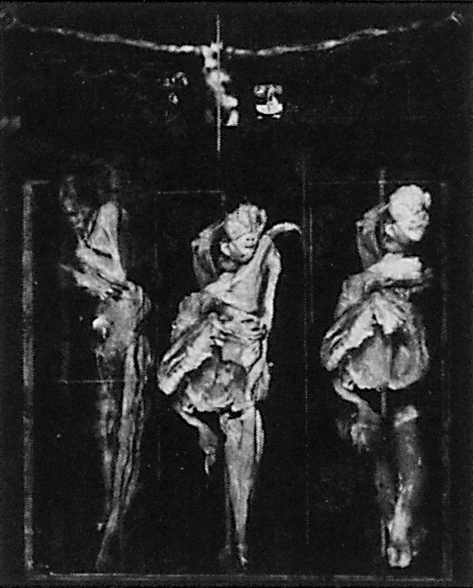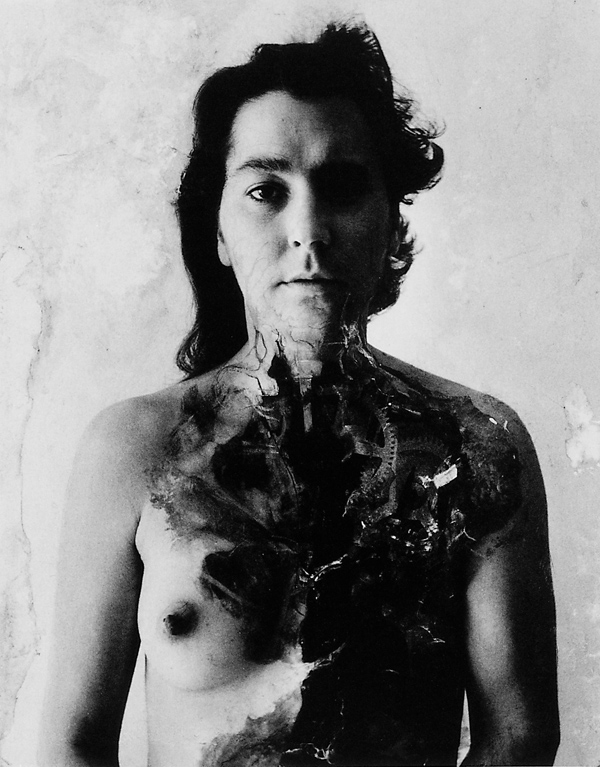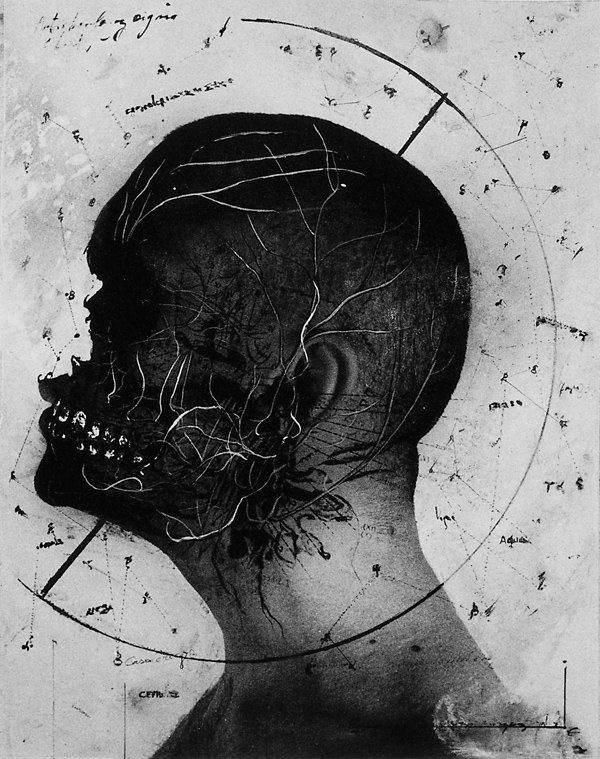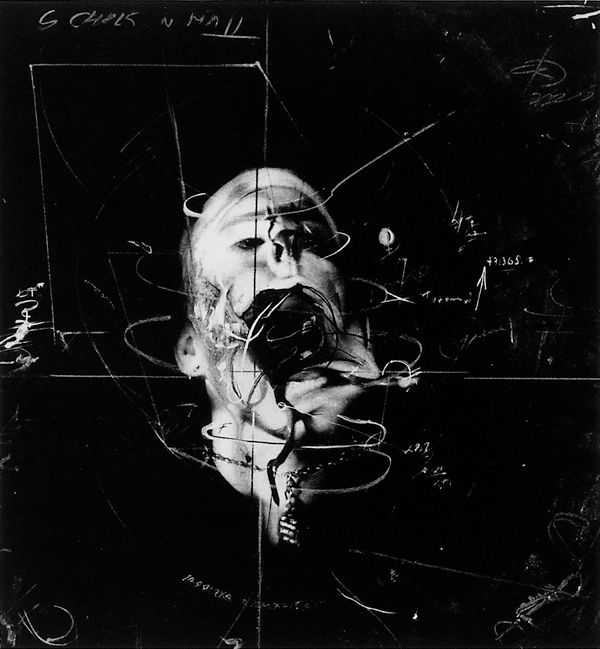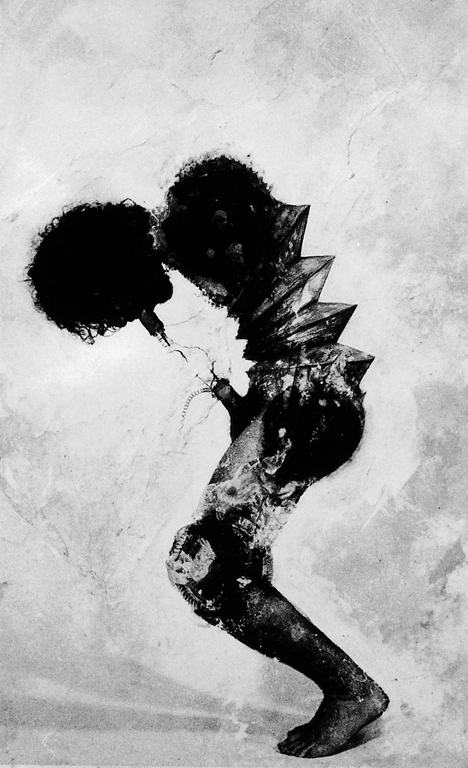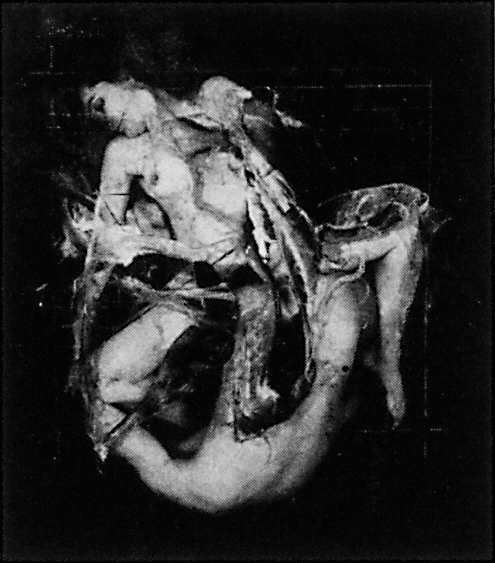[Winter 1995-1996]
by Sylvain Campeau
Paul Lowry’s work, from Photographs from the Grand Academy of Lagado (1989-90) through Copulation Studies (1993) to Man Figure (1995), has been inspired by various sources.
One of the most important is the photographic system of J.H. Lamprey, a British anthropologist who tried to create a comparative visual catalogue of different human races. In order to provide images that could be used in scientific observation, he placed his nude subjects in front of a two-inch-square grid.
A second influence leads to phrenology and physiognomy, two vaguely esoteric “sciences” popularized in the nineteenth century, a time of extreme fads and sometimes dumbfounding symbioses between science and mysticism.
It would seem, then, that scientific progress has relied on observation of objects that are fixed, catalogued, weighed, and measured by various means, including photography. The resulting numbers and measurements can result in disturbing discoveries, as typologies take recourse to cross-references and distinctions. From such classifications, it is believed, we will come to know the world. The illusion explored and exploited by Lowry, through references to phrenology and physiognomy, is that the surface bears signs of what may be hidden inside. This illusion seems perfectly plausible in the exploded heads, gutted bodies, and their insides displayed on the vaguely anthropometric grid (for this is exactly what it is: an anthropometrics, a measurement of the human being, reduced from its complexity to measurable and quantifiable gears and mechanisms!). In these images, the interior maculates the exterior, blurs the possible readings, soils the numbers with blood to make them illegible. The system is corrupted; it is impossible to read anything from this system of logic, which we have too closely and literally obeyed. Suddenly, we are hit with the fact that Lowry has turned knowledge into violence – a deep and dismembering laceration.
Could it be that true knowledge leads us not to identification – recall that anthropometrics and physiognomy are ways of identifying humans – but to changing surfaces? Although we might gain metonymic knowledge, what is inside does not necessarily appear on the outside. Thus, photography is, perhaps, a science of that which moves on the surface, without offering any information about what exists beneath – a mottled science of immeasurable shimmerings on the lustre of places and times. It is this entanglement that we see manifested in Copulation Studies. In this series of liquids and streaks of semen, bodies interpenetrate, seeming to couple with the fury that is part of all sexual acts. From carved-up bodies, anthropological remains, objects of study submitted to scrupulous observation, via an organic, eviscerating investigation for a better knowledge of what we are and of the fate that has made us what we are, we proceed to this promise that all procreation holds out – a wager on the future. The organic matter is no longer scrutinized and analyzed in these hollowed remains, but it is held within that which we exchange between ourselves in order to forge a chancy existence. The micturation of our exchanges, the pulse of our presences, the essence of what in us compels us to go beyond ourselves into another – photography trucks in these essences of couplings and collages that form the raw material for the thousands and thousands of threads in the warp and weft of the real. Photography is the libido of the real. Perverse polymorphs, Man Figures roll back up the slope.
Paul Lowry has bachelor’s degrees in visual arts from the Université du Québec à Chicoutimi and in photography from Ryerson Polytechnical Institute in Toronto, and a master’s degree from Concordia University. He teaches at the Saidye Bronfman Centre’s School of Fine Arts in Montreal. His works are exhibited regularly in galleries in Montreal and throughout Canada.
Sylvain Campeau is an essayist, art critic, independent curator, and poet For the last Mois de la Photo de Montréal, he directed the exhibition À suivre…, at the Maison de la Culture Mont-Royal. His latest work, Chambres obscures -photographies et installation, will be published at the end of November by Éditions Trois.

